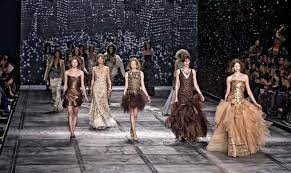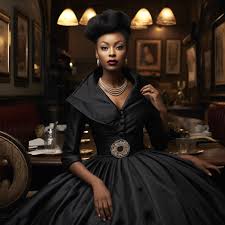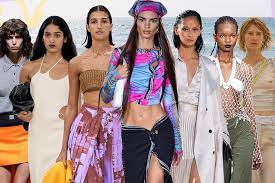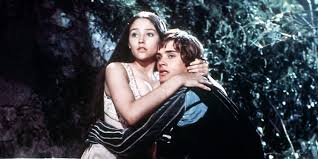Fashion is a dynamic and ever-evolving form of self-expression that encompasses clothing, accessories, footwear, hairstyles, and makeup.
It reflects cultural trends, societal norms, and individual preferences, serving as a means of personal identity and creativity. Is not just about following the latest trends but also about experimenting with styles, colors, and silhouettes to convey one’s personality and mood. It encompasses a wide range of influences, from high-end designer labels and couture fashion to streetwear and vintage fashion. Ultimately, fashion is a form of art that empowers individuals to showcase their uniqueness and individuality to the world.
To get more updates click see here: https://www.youtube.com/watch?v=tU8nvdTNs2s
A Glimpse of Fashion
Fashion is a term used interchangeably to describe the creation of clothing, footwear, accessories, cosmetics, and jewelry of
different cultural aesthetics and their mix and match into outfits that depict distinctive ways of dressing (styles and trends) as
signifiers of social status, self-expression, and group belonging. As a multifaceted term, fashion describes an industry, styles,
aesthetics, and trends.
The term ‘fashion’ originates from the Latin word ‘Facere,’ which means ‘to make,’ and describes the manufacturing, mixing, and
wearing of outfits adorned with specific cultural aesthetics, patterns, motifs, shapes, and cuts, allowing people to showcase their
group belonging, values, meanings, beliefs, and ways of life. Given the rise in mass production of commodities and clothing at
lower prices and global reach, reducing fashion’s environmental impact and improving sustainability has become an urgent issue among politicians, brands, and consumers.
Fashion offers a captivating glimpse into the ever-changing tapestry of human expression and creativity. It’s not merely about clothing;
it’s a reflection of culture, history, and individual identity. From the luxurious gowns of royalty to the everyday street style of urban youth, fashion captures the essence of society at any given moment.
Story around Fashion
In a single glance, fashion reveals a story: the story of trends rising and falling, of designers pushing boundaries and challenging conventions, of people asserting their uniqueness and belonging. It’s a visual language spoken on the runways of Paris, the bustling streets of Tokyo, and the red carpets of Hollywood.
Fashion is a mirror reflecting our desires, dreams, and aspirations. It’s an art form that transcends borders and connects people from different walks of life.
Whether it’s the elegance of a tailored suit, the bohemian charm of a flowing dress, or the rebellious edge of punk-inspired attire,
fashion allows us to express who we are and who we want to be.
In this ever-evolving world, it provides a glimpse into the past, a snapshot of the present, and a hint of what the future may hold.
It’s a journey of self-discovery, a celebration of individuality, and a testament to the enduring power of human creativity.
Fashion Industry

The industry is a multifaceted and global network of businesses involved in the design, production, marketing, and
distribution of clothing, accessories, and related products. It encompasses a wide range of sectors, including haute couture,
ready-to-wear, streetwear, luxury brands, and more.
Design and Creativity: Fashion designers are the creative minds behind clothing and accessory collections, conceptualizing and
creating new styles, silhouettes, and trends. They draw inspiration from various sources, including art, culture, history, and current events, to develop unique and innovative designs.
Manufacturing and Production: The manufacturing sector of the fashion industry involves the production of garments and
accessories on a mass scale. This process typically includes sourcing materials, pattern-making, cutting, sewing, and quality control. Manufacturers may operate their own factories or outsource production to third-party contractors, often located in countries with lower labor costs.
Marketing and Branding: Marketing plays a crucial role in the industry, with brands employing various strategies to promote their products and connect with consumers. This includes advertising campaigns, fashion shows, social media marketing,
influencer collaborations, and celebrity endorsements. Branding is also essential for establishing a distinct identity and reputation within the market.
Retail and Distribution: Fashion brands sell their products through a variety of channels, including brick-and-mortar stores, e-commerce websites, department stores, boutiques, and pop-up shops. Retailers manage inventory, merchandising, and customer service to provide a seamless shopping experience for consumers.
Overall, the fashion industry is a dynamic and competitive sector that continues to evolve in response to changing consumer preferences, technological advancements, and global trends.
Fashion and Political Activism

Fashion has often been intertwined with political activism, serving as a powerful platform for expressing social and political messages, raising awareness about important issues, and advocating for change. Here are some ways in which fashion intersects with political activism:
Protest Fashion: Throughout history, clothing and accessories have been used as symbols of protest and resistance. T-shirts, slogans, and symbols have been employed to convey political messages, support social movements, and challenge authority
For example, during the civil rights movement in the United States, activists wore clothing adorned with slogans like “Black Power” and “I Am A Man” to demand racial equality and justice.
Ethical Fashion: Ethical focuses on promoting sustainable and ethical practices within the fashion industry, including fair labor conditions, environmentally friendly production methods, and animal welfare. Activists and organizations advocate for transparency and accountability within fashion supply chains, encouraging consumers to support brands that prioritize ethical values.
Gender Equality: Fashion has played a role in challenging traditional gender norms and stereotypes, with designers and activists advocating for gender-inclusive clothing and representation. The rise of gender-neutral fashion and the visibility of LGBTQ+ models and designers have contributed to broader conversations about gender equality and diversity within the industry.
Environmental Activism: As the industry grapples with its environmental impact, there has been a growing movement towards sustainable and eco-friendly fashion practices. Activists and organizations raise awareness about issues such as textile waste, pollution, and overconsumption, urging consumers to embrace more sustainable fashion choices.
Overall, fashion serves as a powerful tool for political activism, enabling individuals and communities to express their values,
challenge injustice, and advocate for social change. By harnessing the creativity and influence of fashion, activists can amplify
their voices and inspire collective action towards a more just and equitable world.
Fashion Trends

Fashion trends are constantly evolving, influenced by a variety of factors including cultural shifts, technological advancements, celebrity influence, and social media. Here are some current trends that have been prominent:
Sustainability: There is a growing emphasis on sustainable and eco-friendly fashion, with consumers seeking out brands that
prioritize ethical production practices, use recycled materials, and reduce waste.
Gender Fluidity: Fashion is becoming more inclusive and diverse, with a rise in gender-neutral clothing and styles that challenge traditional gender norms. Designers are blurring the lines between menswear and womenswear, offering unisex options that cater
to a wider range of identities.
Athleisure: The trend of wearing activewear as everyday clothing continues to gain popularity, with comfortable and functional pieces
like leggings, joggers, and sneakers becoming wardrobe staples for many people.
Vintage and Retro Styles: Nostalgia-driven fashion trends are on the rise, with a resurgence of vintage and retro-inspired clothing from various decades. This includes 90s fashion, 80s power dressing, and 70s bohemian styles.
Bold Colors and Prints: Vibrant hues, bold patterns, and statement prints are making a comeback, adding excitement and personality to outfits. Color-blocking, animal prints, and psychedelic patterns are particularly popular.
Sustainability: As awareness about environmental issues grows, consumers are increasingly prioritizing sustainable and eco-friendly choices. This includes supporting brands that use organic materials, employ ethical production practices, and promote
transparency in their supply chain.
Minimalism: On the opposite end of the spectrum, minimalism remains a timeless trend, with clean lines, neutral colors, and
understated silhouettes continuing to be popular choices for those seeking simplicity and elegance in their wardrobe.
In Conclusion
the fashion industry is a multifaceted and influential sector that shapes culture, identity, and self-expression around the world. However, it also has a significant environmental impact, contributing to pollution, resource depletion, and climate change. Addressing these
challenges requires collective action and collaboration across all stakeholders, including fashion brands, manufacturers, consumers, and policymakers.
By prioritizing sustainability, ethical practices, and innovation, the industry can minimize its environmental footprint and contribute to a more sustainable and equitable future. This includes embracing circular economy principles, reducing waste and emissions,
investing in eco-friendly materials and production methods, and promoting transparency and accountability throughout the supply chain.
As consumers, we also have a role to play in driving positive change by making conscious and informed choices about the
clothes we buy, supporting brands that prioritize sustainability and ethical practices, and advocating for greater industry-wide accountability.
Ultimately, by working together to address the environmental challenges facing the industry, we can create a more
resilient and responsible ecosystem that benefits both people and the planet.
Read More: https://placesandlifestyle.com/unleashing-your-style-a-journey-into-the-world-of-fashion/




